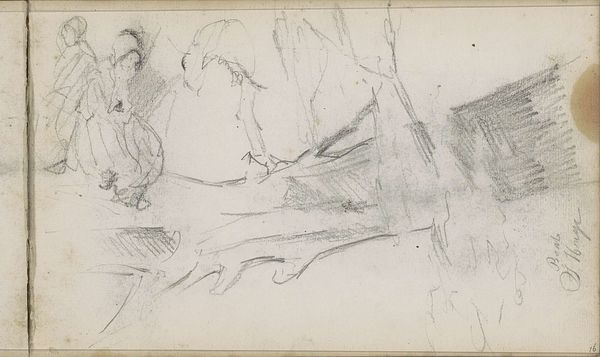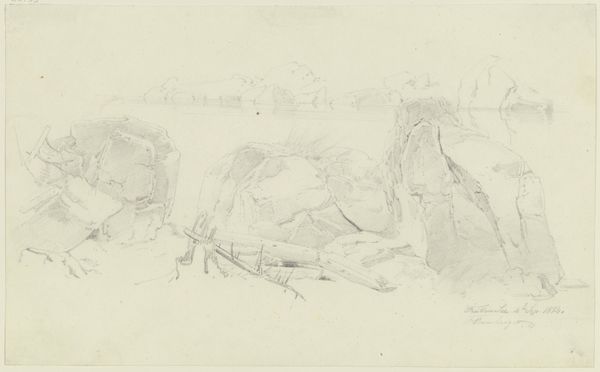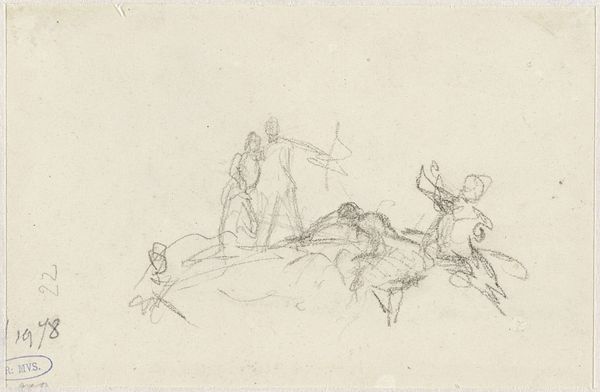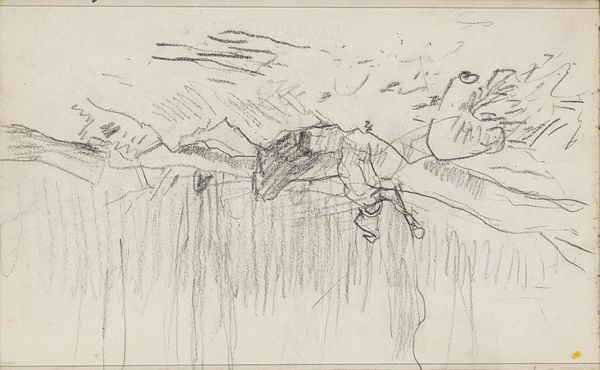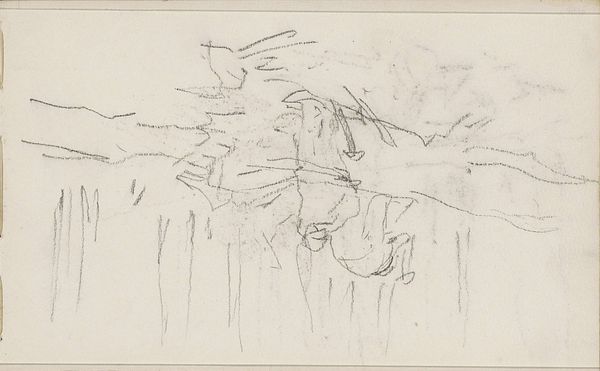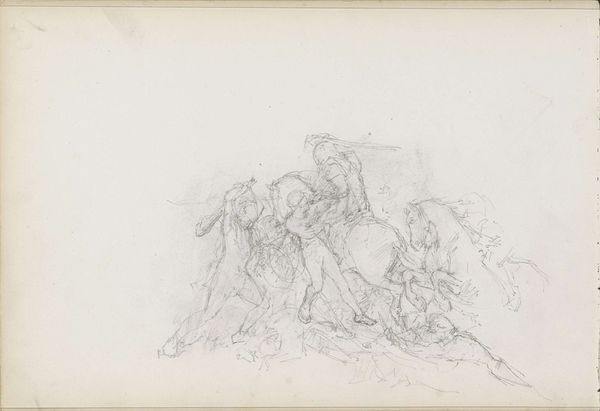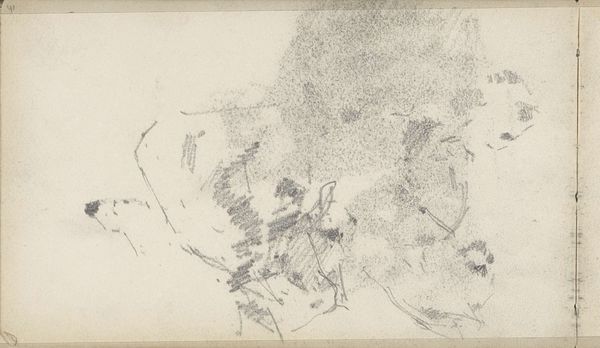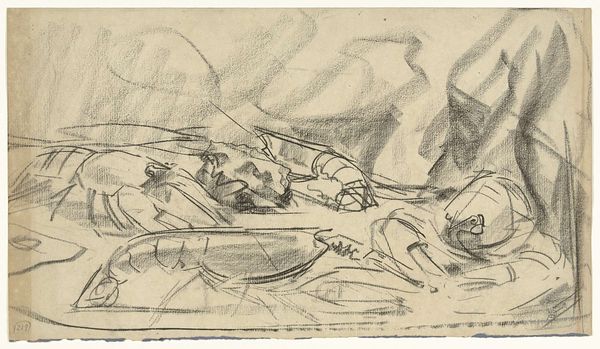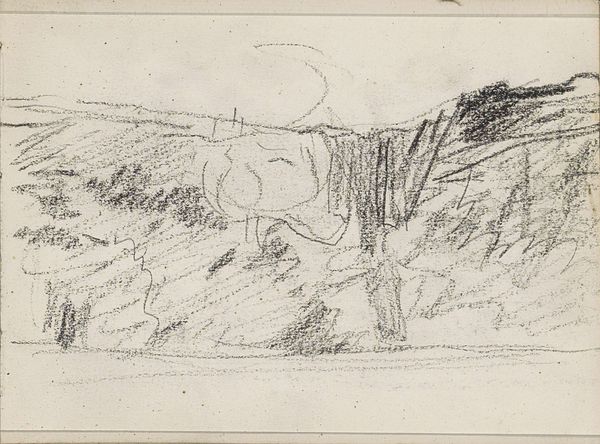
drawing, pencil
#
portrait
#
drawing
#
landscape
#
pencil
#
realism
Dimensions: height 126 mm, width 181 mm
Copyright: Rijks Museum: Open Domain
Curator: "Schilder in een rotslandschap," or "Painter in a Rocky Landscape," created by Jozef Israëls between 1834 and 1911. This work, held at the Rijksmuseum, presents us with a scene rendered in pencil on paper. Editor: It evokes a feeling of quiet introspection. The muted tones and sketch-like quality make it seem very personal, almost like glimpsing a private moment. Curator: Israëls, as a figure within the Hague School, often explored themes of daily life, rural scenes, and the human condition. You see those concerns echoed here, but focused through the act of artistic creation itself. What meanings are conveyed through landscape imagery in this context? Editor: It makes me think about labour, not just of the hands but of the mind. This artist is actively shaping the landscape, claiming space and ownership of this imagery through art, even if this process seems temporary. Who had access to create or be the representation of the subject throughout that time period? Curator: I agree; this isn’t simply about the aesthetic appreciation of landscape, but rather, I see it as a symbolic connection to nature. Consider how the rocky terrain might represent perseverance and steadfastness. He's nestled amongst those crags and that to me hints at the intimate relationship he has with his chosen artistic endeavor, an artistic refuge of sorts. Editor: Perhaps, but the rough, unfinished edges also bring a rawness and immediacy that are very much present, maybe even confronting an art world of idealization, instead showing the working artist that, at this time in Europe, might not get this sort of treatment if painting working class or poverty subjects. Curator: An excellent point. I do see an interplay here. The landscape as an inspirational force, but equally, the individual artist carving out their space and perhaps asserting a particular perspective, what kind of story to convey of landscape and how one makes contact with it, given his time in history. Editor: This drawing has certainly encouraged me to reflect on who historically dictates the terms of representation, of both landscapes and identities. Curator: For me, it reveals art as a refuge where symbols, personal narratives, and cultural values intertwine.
Comments
No comments
Be the first to comment and join the conversation on the ultimate creative platform.

